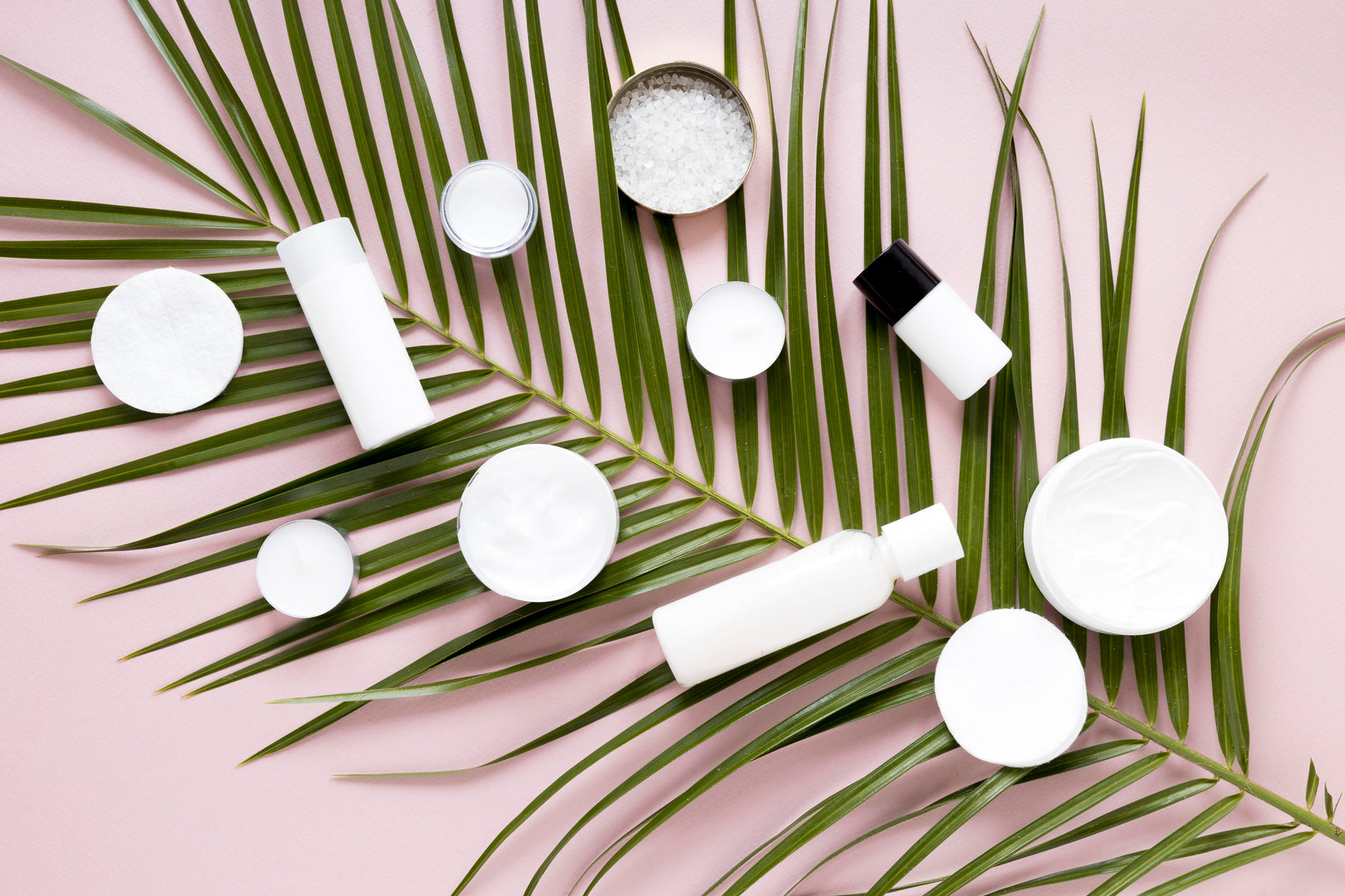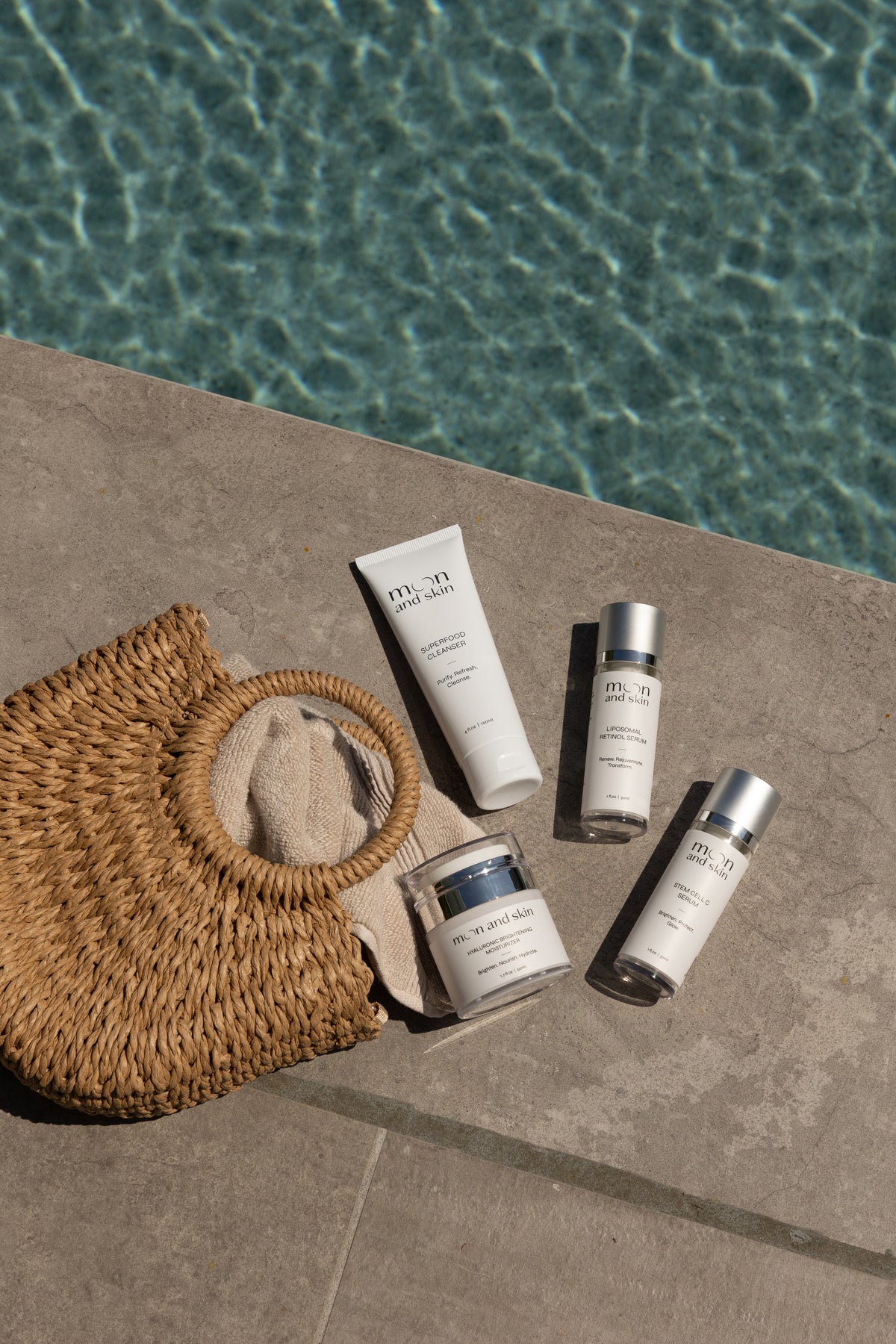Table of Contents
Introduction
Have you ever looked in the mirror and felt your skin just looked… dull? You’re not alone. A surprising statistic reveals that our skin’s natural glow decreases with age, as the cell turnover process slows down significantly—by about 10% per decade starting from age 18. This gradual decline can leave our skin looking lackluster and tired. At Moon and Skin, we understand that achieving a radiant complexion can feel like a challenge, but there's a simple solution: exfoliation.
In this blog post, we will explore how to deeply exfoliate your face, allowing you to rejuvenate your skin and enhance its natural beauty. We’ll discuss the different types of exfoliation, how to choose the right method for your skin type, and the benefits and potential pitfalls of exfoliating. By the end, you’ll be equipped with all the knowledge you need to create a personalized exfoliation routine that works for you. Together, we’ll embark on a journey toward brighter, smoother skin that reflects your unique beauty at every phase of life.
What is Exfoliation?
Exfoliation is the process of removing dead skin cells from the surface of the skin. This process helps to reveal the fresh, healthy skin underneath. It can improve skin texture, brighten the complexion, and allow other skincare products to penetrate deeper and work more effectively. The skin naturally sheds dead cells, but as we age, this process slows down, leading to a buildup that can result in dullness, rough texture, and even breakouts.
Why Exfoliation is Important
Exfoliation plays a crucial role in our skincare routines for several reasons:
- Improves Texture: Regular exfoliation helps to smooth out rough patches and makes the skin feel softer.
- Brightens Complexion: By removing dead skin cells, exfoliation can help to reveal a brighter, more radiant complexion.
- Prevents Breakouts: Exfoliating can help to unclog pores, reducing the chances of acne and breakouts.
- Enhances Product Absorption: When dead skin cells are removed, it allows other products, like serums and moisturizers, to penetrate more effectively.
- Promotes Cell Turnover: Regular exfoliation encourages the skin to regenerate and renew itself, which is essential for maintaining youthful skin.
Types of Exfoliation
There are two primary methods of exfoliation: mechanical (physical) and chemical. Understanding the difference between these two methods will help you choose the best approach for your skin type and needs.
Mechanical Exfoliation
Mechanical exfoliation involves physically scrubbing the skin to remove dead cells. This can be done using tools or products that contain abrasive particles. Common methods include:
- Scrubs: These are products that contain small particles, such as sugar or salt, which help to slough off dead skin. For instance, our Superfood Cleanser gently cleanses while nourishing your skin, making it a great option for those looking to exfoliate without harsh abrasives.
- Exfoliating Brushes: Tools like facial brushes or sponges can be used to provide a deeper exfoliation. However, it’s essential to use these tools gently to avoid irritation.
Chemical Exfoliation
Chemical exfoliation uses acids or enzymes to dissolve dead skin cells. This method is often gentler than mechanical exfoliation and can be more effective for certain skin types. Types of chemical exfoliants include:
- Alpha Hydroxy Acids (AHAs): These are water-soluble acids derived from fruits and are effective for dry or sun-damaged skin. They work by breaking down the bonds between dead skin cells, allowing them to be easily removed.
- Beta Hydroxy Acids (BHAs): Salicylic acid is a common BHA that penetrates oil and is ideal for oily or acne-prone skin. It helps to unclog pores and reduce the appearance of blemishes.
Both types of exfoliation can be effective, but the choice often depends on your skin type and personal preferences.
How to Choose the Right Exfoliation Method for Your Skin Type
Selecting the right exfoliation method is essential for achieving the best results without causing irritation. Here’s a quick guide based on skin types:
Sensitive Skin
If you have sensitive skin, we recommend opting for a gentle chemical exfoliant like our Hyaluronic Brightening Moisturizer, which contains hydrating and brightening properties. Mechanical exfoliation may cause irritation, so it’s best to avoid scrubs and harsh brushes.
Dry Skin
For dry skin, AHAs are often a better choice as they also provide hydration while exfoliating. Consider incorporating a mild AHA product into your routine, and always follow exfoliation with a rich moisturizer.
Oily or Acne-Prone Skin
If you have oily or acne-prone skin, BHAs like salicylic acid can be beneficial. They penetrate the oil and help to prevent breakouts. You can also use mechanical exfoliation, but be cautious not to overdo it, as this can lead to irritation.
Combination Skin
For combination skin, a balanced approach works best. You can alternate between AHAs for dry areas and BHAs for oily zones. Our Liposomal Retinol Serum can also help promote cell turnover while minimizing irritation.
Normal Skin
Those with normal skin can experiment with both mechanical and chemical exfoliation methods. Aim for a balanced routine that incorporates both types, depending on your skin’s needs at the time.
How Often Should You Exfoliate?
The frequency of exfoliation depends on your skin type and the method you choose. Here are some general guidelines:
- Sensitive Skin: Once a week or as recommended by a dermatologist.
- Dry Skin: 1-2 times a week, using gentle exfoliants.
- Oily Skin: Up to 3-4 times a week, with a focus on BHAs for best results.
- Normal/Combination Skin: 2-3 times a week, alternating between AHAs and BHAs or mechanical exfoliation.
It’s crucial to listen to your skin. If you notice irritation, reduce the frequency of exfoliation.
How to Exfoliate Your Face
Now that you understand the types of exfoliation and how to choose the right method, let’s walk through the steps for a safe and effective exfoliation process.
Step 1: Cleanse Your Face
Start by using a gentle cleanser to remove dirt, oil, and makeup from your face. Our Superfood Cleanser is a great option that cleanses deeply while nourishing your skin.
Step 2: Apply the Exfoliant
- For Mechanical Exfoliation: If using a scrub, apply a small amount to your fingertips and gently massage it onto your face in small circular motions for about 30 seconds. Rinse off with lukewarm water.
- For Chemical Exfoliation: If using a chemical exfoliant, apply it according to the product instructions. This may involve using a cotton pad to apply a liquid exfoliant or following the instructions for a peel.
Step 3: Rinse
Rinse your face thoroughly with lukewarm water. This temperature is ideal as it helps to open pores without causing irritation.
Step 4: Follow with Moisturizer
After exfoliating, it’s essential to hydrate your skin. Apply a moisturizer that suits your skin type to lock in moisture. Our Hyaluronic Brightening Moisturizer is an excellent choice for maintaining hydration after exfoliation.
Common Exfoliation Mistakes to Avoid
While exfoliation can be incredibly beneficial, there are common mistakes that can lead to irritation or adverse effects:
- Over-Exfoliating: Doing it too often can strip the skin of its natural oils and lead to increased sensitivity.
- Using Harsh Products: Avoid products with large, coarse particles that can cause micro-tears in the skin.
- Skipping Moisturizer: Always follow exfoliation with a good moisturizer to restore hydration.
- Exfoliating Compromised Skin: Never exfoliate if you have open wounds, sunburn, or active acne to avoid further irritation.
What to Do If You Over-Exfoliate
If you find your skin becoming red, irritated, or peeling, it’s essential to give your skin a break. Here’s how to care for over-exfoliated skin:
- Stop Exfoliating: Take a break from exfoliation until your skin heals.
- Use Gentle Products: Stick to calming, hydrating products that are free from fragrance and harsh ingredients.
- Stay Hydrated: Drink plenty of water and consider using a humidifier to keep your skin hydrated.
- Consult a Dermatologist: If irritation persists, it’s best to seek advice from a skincare professional.
Summary of Key Takeaways
- Exfoliation is essential for maintaining healthy, radiant skin.
- There are two primary methods of exfoliation: mechanical and chemical.
- Choose the method based on your skin type for optimal results.
- Exfoliate with care, following a proper routine and paying attention to your skin’s needs.
- Always follow up with a moisturizer to keep your skin hydrated.
Conclusion
By understanding how to deeply exfoliate your face and choosing the right products and methods for your skin type, you can achieve a vibrant, healthy complexion. At Moon and Skin, our mission is to provide clean, thoughtful skincare that supports you through every phase of life. Our Bundle & Save collection allows you to build a complete skincare routine that includes everything you need to keep your skin glowing and healthy.
So, are you ready to embrace the benefits of exfoliation? Let’s embark on this journey to radiant skin together!
FAQ
Q: How do I know if I’m exfoliating too much?
A: If your skin becomes red, irritated, or starts to peel, you may be exfoliating too frequently. Reduce the frequency and focus on gentle products.
Q: Can I exfoliate every day?
A: For most skin types, daily exfoliation is not recommended. Instead, aim for 1-4 times a week depending on your skin sensitivity and type.
Q: What should I do if I experience irritation after exfoliating?
A: Stop using exfoliating products, switch to gentle, hydrating products, and consult a dermatologist if irritation persists.
Q: Can I use both mechanical and chemical exfoliants in my routine?
A: Yes, but it’s essential to space them out and not use both on the same day to avoid irritation.
Q: How can I incorporate exfoliation into my skincare routine?
A: Start by cleansing your face, then apply your chosen exfoliant, rinse, and follow up with a moisturizer. It can be integrated into your routine 1-4 times a week based on your skin type.
Explore our products and take the next step toward achieving your best skin!







